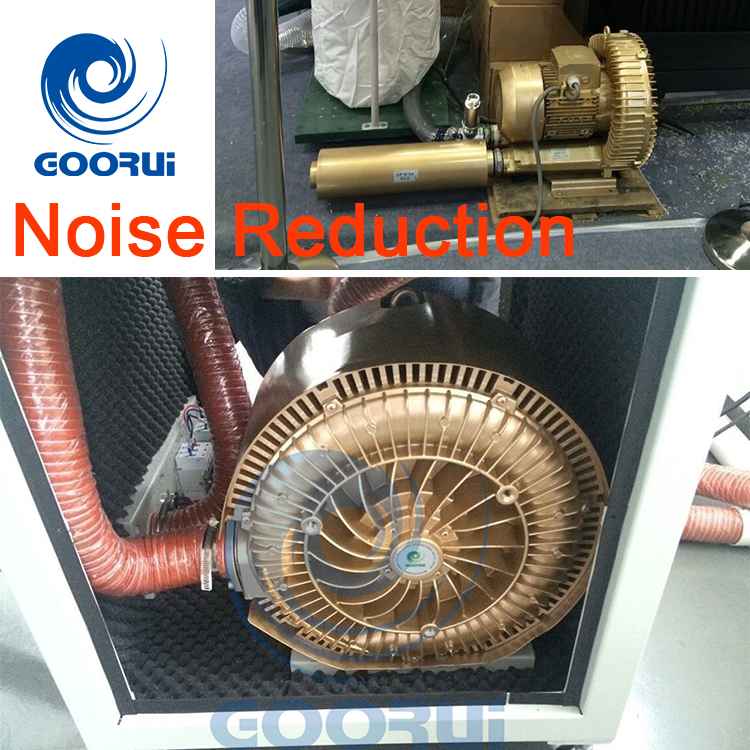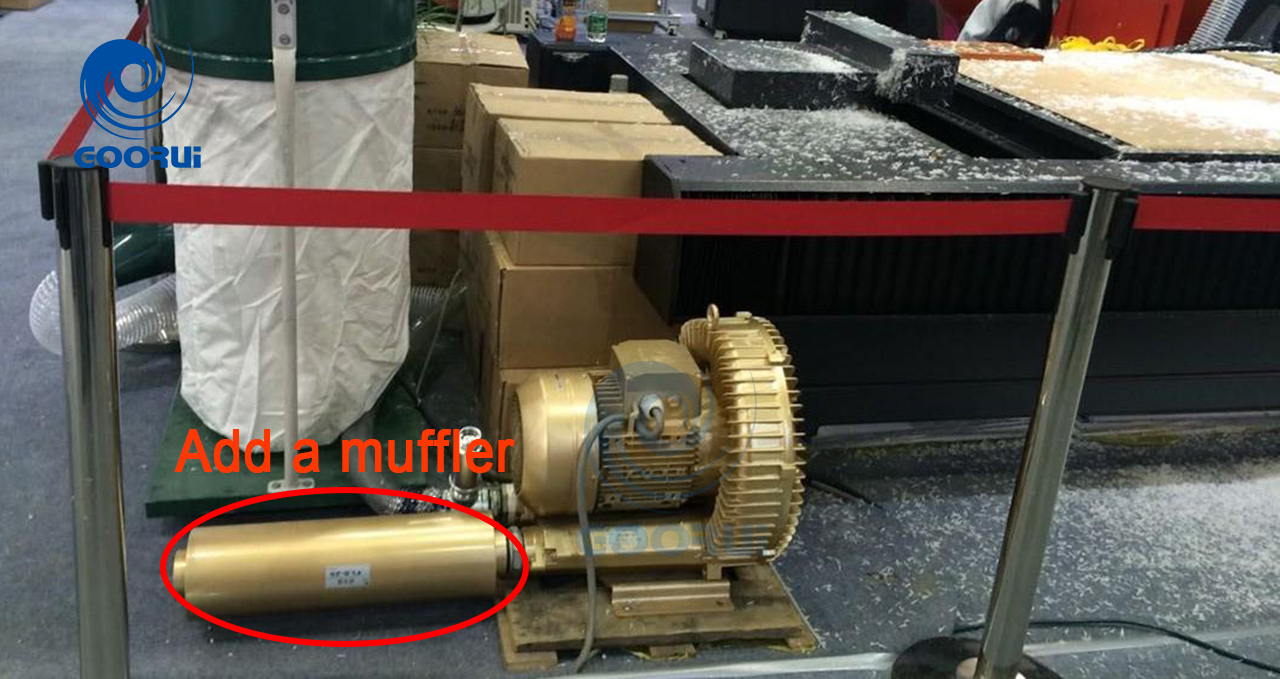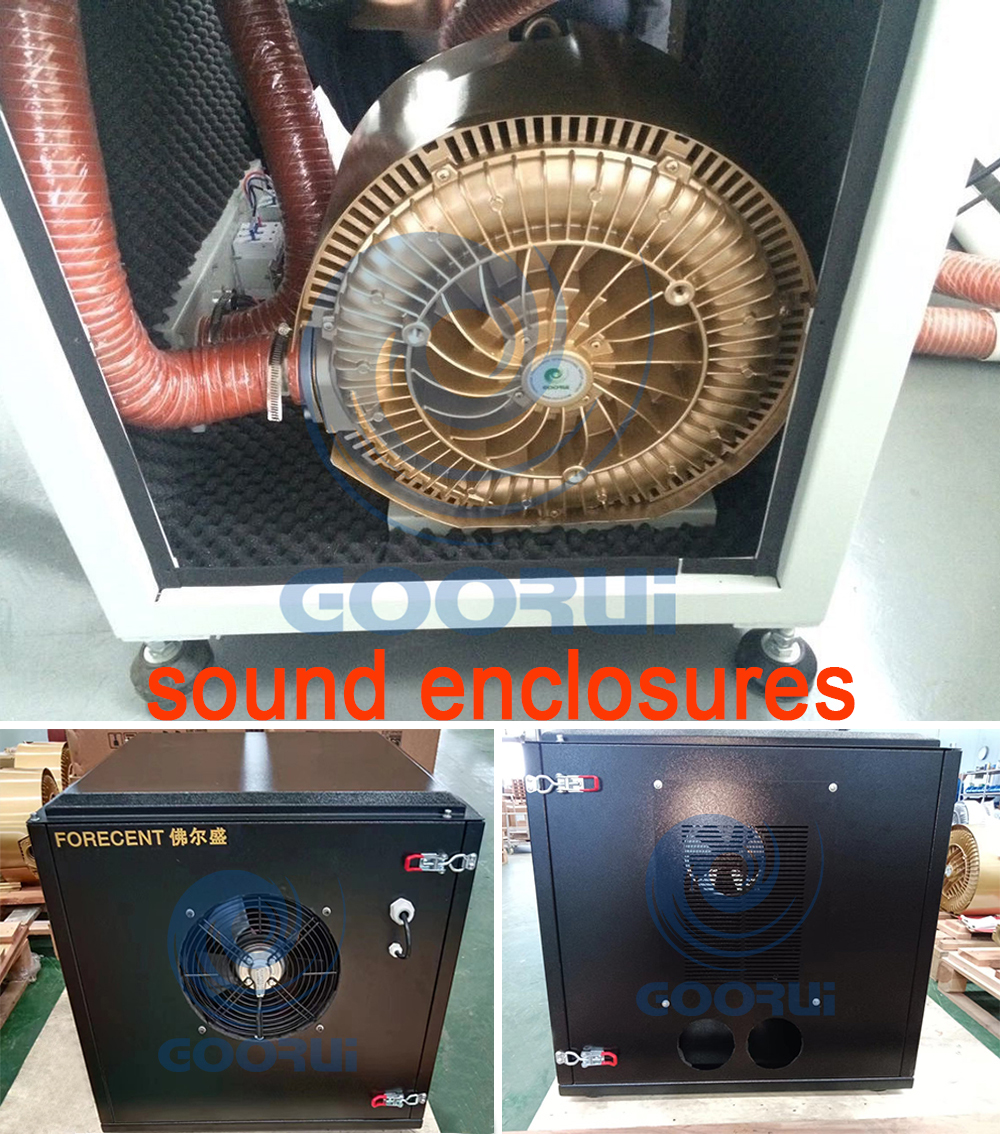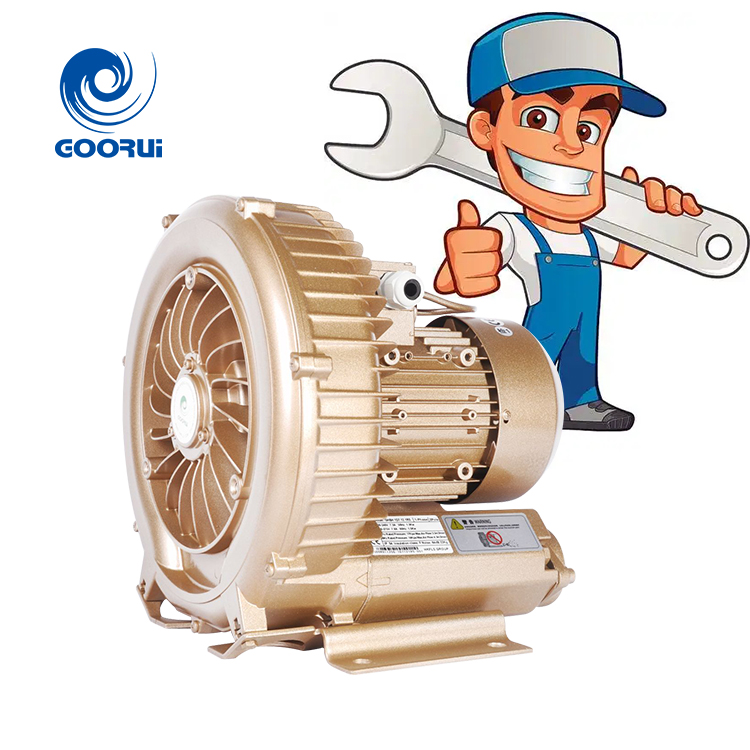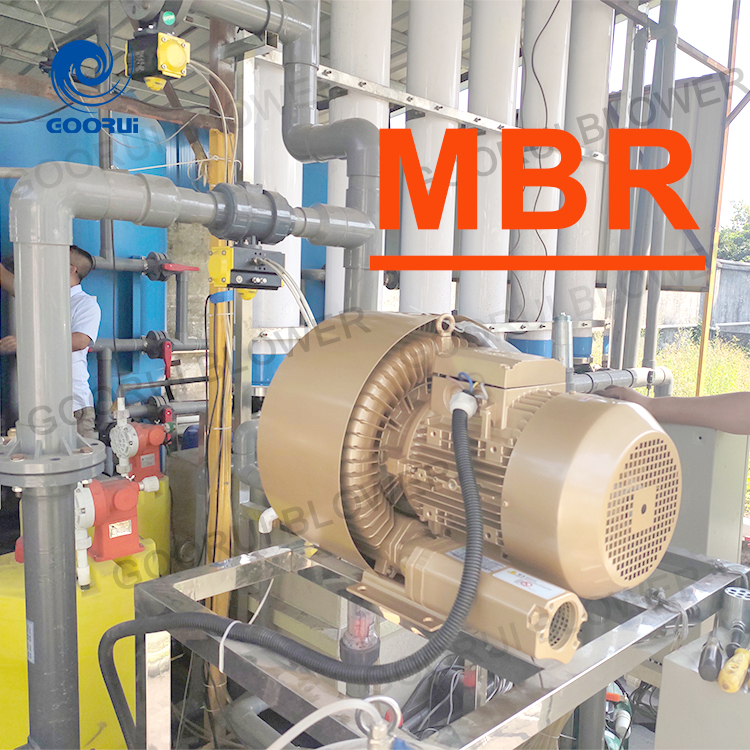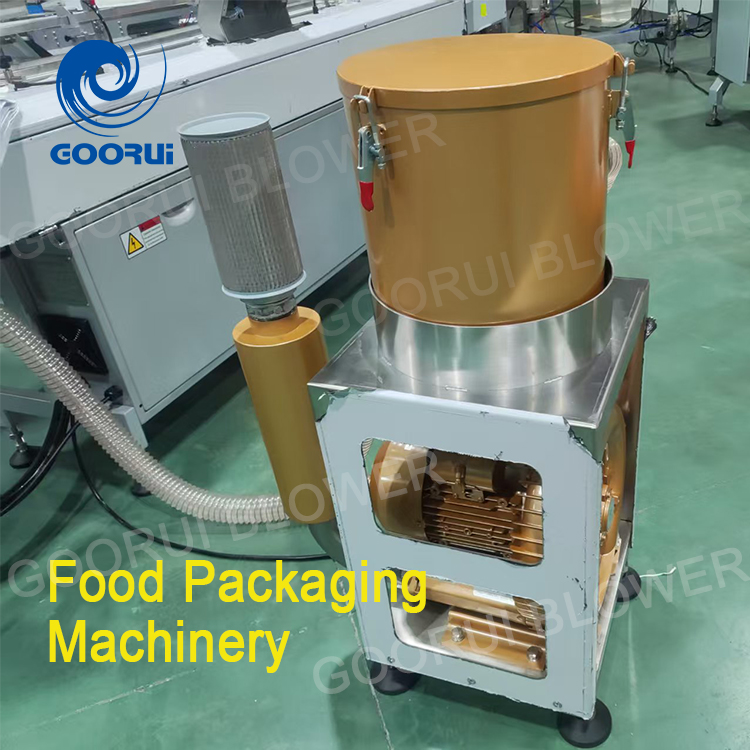The core of the physical method for noise reduction of high-pressure side channel blowers is achieved by “weakening the vibration of the sound source, blocking the transmission of noise, and absorbing the energy of sound waves”, without relying on chemical or electronic means, which is safe and highly adaptable.
Physical Noise Reduction at the sound Source End
· Vibration isolation: Spring shock absorbers, rubber shock absorbers or shock absorbers are installed on the base to cut off the transmission of fan vibration to the ground/support, reducing structural resonance noise.
· Optimize mechanical structure: Inspect and tighten the connecting parts of the impeller, casing and motor, replace worn bearings or impellers, ensure dynamic balance accuracy, and reduce mechanical friction and airflow disturbance noise.
· Adjust the airflow state: Install a deflector at the air inlet to prevent turbulence noise caused by airflow impact; Rationally design the intake and exhaust air channels to reduce air flow swirling and sudden pressure changes.
Physical obstruction/absorption along the transmission path
· Install mufflers(Silencer): Add impedance composite mufflers or reactive mufflers to the air inlet and outlet. Through the sound-absorbing materials and acoustic structure inside the pipeline, the aerodynamic noise is directly weakened.
· Sound insulation enclosure wrapping: The fan is covered with a sound insulation enclosure made of metal plates and sound-absorbing cotton (rock wool, glass wool). The metal plates block noise transmission, and the sound-absorbing cotton absorbs the reflected sound waves inside.
· Pipe vibration and noise reduction: Flexible joints (made of rubber or canvas) are used at the connection between the air duct and the fan, and sound-absorbing materials are wrapped around the outer wall of the pipe to reduce vibration transmission and pipe radiation noise. Reduce the number of elbows in the air ducts and shorten their lengths to avoid secondary noise from the airflow.
Environmental Physical Optimization
· Independent sound insulation space: Place the fan in a separate machine room. Install perforated sound-absorbing panels on the walls and ceilings of the machine room, and carry out shock absorption treatment on the floor to create a closed noise reduction environment.
· Sound wave reflection control: Set up sound-absorbing barriers around the fan or lay sound-absorbing materials on the walls and floors to reduce the superposition of noise reflection.
Precautions
-Noise reduction measures should take into account ventilation and heat dissipation to prevent the fan from overheating and getting damaged due to overly tight sealing.
-Regularly maintain the fan, clean the dust accumulated on the impeller, and check the lubrication status of the bearings to prevent increased noise due to component wear.


